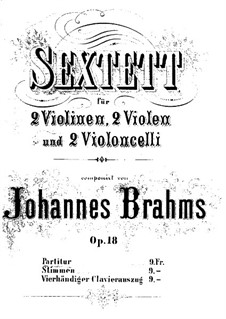

The middle Adagio of this concerto is one measure comprised of just two chords acting more as a breath before a plunge back into the word of the virtuosic. The other is the striking lack of a slow movement. For one, the strings are divided into three times three (3/3/3), something more common to contemporary music that the 18th century. There are several striking qualities about the third concerto. The third concerto is one of three that is composed from strings and continuo and, from the view of character and emotion, it showcases how virtuosic pure joy can be. Essentially a series of six job applications from Bach to the Margrave Christian Ludwig of Brandenburg in 1721 these concerto run the gamut of both instrumental combinations and emotions of the. For those who know the work the pieces are based on the following: Originally for recorder and string quartet, tonight we are hearing a version for soprano saxophone and string quartet made by the composer. This work picks six of Bach’s two-part inventions (works she studied as a child) and puts them through the looking glass. Going more towards the modern re-working of Bach comes Re-inventions by Russian-Australian composer, Elena Kats-Chernin. Whether Brahms knew of Bach’s Chaconne in 1860 isn’t clear, but it is tantalizing to think so as, over a decade later, Brahms himself would transcribe Bach’s Chaconne into a version for piano left-hand.

18 Sextet has a clear key relationship to Bach (d minor) and structural link to the baroque Chaconne with its strict theme and variations.

Schumann, Mendelssohn, and Brahms are all credited with the 19th century revival of Bach’s music. If I imagined that I could have created, even conceived the piece, I am quite certain that the excess of excitement and earth-shattering experience would have driven me out of my mind.”īrahms follows Bach on this program with his String Sextet in B-flat Major, Op. “On one stave, for a small instrument, the man writes a whole world of the deepest thoughts and most powerful feelings. When Johannes Brahms (also on this concert) stumbled upon Bach’s “Chaconne” in 1877, he simply couldn’t believe his eyes. However, when in Bach’s hands it became “one of the greatest works of art in human history” (Joshua Bell). On the surface it doesn’t seem that exciting. A Chaconne is a baroque form characterized by a slow tempo, its meters (triple), and its short bass line structure that repeats ad infinitum throughout the piece.

The final concert of the 2023 season features both examples starting with a transcription of the famous Chaconne for violin solo. You can hear everything from direct adaptations, like an electric guitar version of Bach’s Toccata and Fugue in D Minor (seriously), or taking material from a Brandenburg Concert and improvising on it across a whole orchestra. Bach has often been “re-invented,” even across genres.


 0 kommentar(er)
0 kommentar(er)
